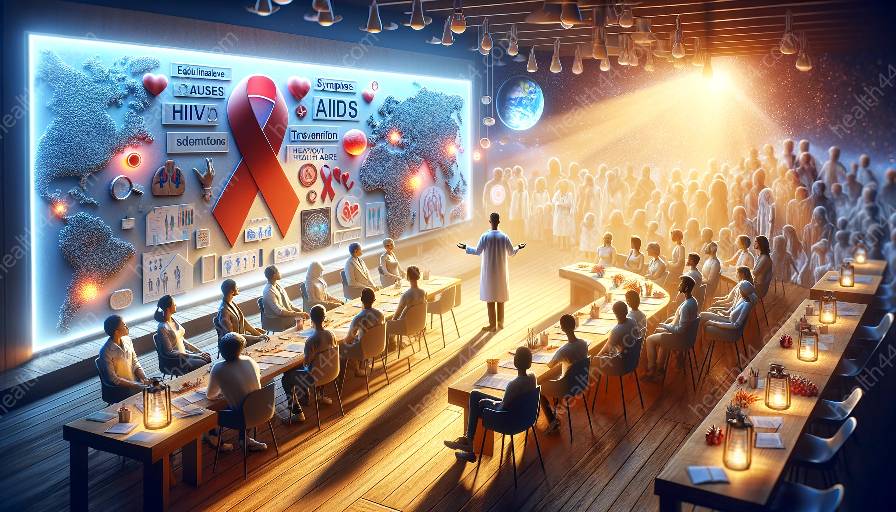HIV/AIDS is a significant health condition affecting children and adolescents worldwide. This topic cluster will provide in-depth information on the impact of HIV/AIDS on young individuals, including the symptoms, prevention, and available treatments. It will also explore the emotional and social implications of living with the virus at a young age. Additionally, we will highlight the importance of education and support for children and adolescents living with HIV/AIDS.
Understanding HIV/AIDS in Children and Adolescents
Human Immunodeficiency Virus (HIV) is a virus that attacks the immune system, weakening the body's ability to fight off infections and diseases. Acquired Immunodeficiency Syndrome (AIDS) is the most advanced stage of HIV infection, characterized by severe damage to the immune system. HIV/AIDS can affect people of all ages, including children and adolescents.
For children and adolescents, HIV/AIDS presents unique challenges and considerations. Unlike adults, young individuals may have limited understanding of the virus and its implications, making it crucial to provide age-appropriate education and support. Moreover, HIV/AIDS can impact their physical, emotional, and social well-being, necessitating specialized care and interventions.
Symptoms and Diagnosis
The symptoms of HIV/AIDS in children and adolescents may vary, and some individuals may not display any signs of infection for years. Common symptoms in children can include frequent infections, delayed development, failure to thrive, and neurological problems. It is essential for healthcare providers to conduct thorough testing to diagnose HIV/AIDS in young individuals, as early detection plays a critical role in managing the condition.
Prevention and Risk Factors
Preventing HIV/AIDS in children and adolescents is of paramount importance. Several factors contribute to the risk of transmission, such as mother-to-child transmission during pregnancy, childbirth, or breastfeeding. Access to healthcare services, including antenatal care and HIV testing for pregnant women, is crucial for preventing transmission to newborns. Furthermore, promoting safe sex practices, providing access to HIV testing and counseling, and addressing stigma and discrimination are essential components of prevention efforts for adolescents.
Effect on Health and Well-Being
HIV/AIDS can profoundly impact the health and well-being of children and adolescents. The virus weakens the immune system, making them more susceptible to infections and other health complications. Additionally, children and adolescents living with HIV/AIDS may experience stigmatization, mental health challenges, and disruptions to their social and educational pursuits. Addressing these multifaceted impacts is essential in providing comprehensive care and support.
Treatment and Management
Advancements in medical care have significantly improved the management of HIV/AIDS in children and adolescents. Antiretroviral therapy (ART) is the cornerstone of treatment, helping to suppress the virus and prevent disease progression. Additionally, healthcare providers may address associated health issues, provide nutritional support, and offer psychosocial interventions to enhance the overall well-being of young individuals living with HIV/AIDS.
Emotional and Social Implications
Living with HIV/AIDS can present emotional and social challenges for children and adolescents. Stigma and discrimination may impact their self-esteem and relationships with peers. It is crucial to create supportive environments that foster acceptance, understanding, and empowerment for young individuals affected by the virus. Education and awareness initiatives can play a pivotal role in addressing misconceptions and reducing stigma.
Educational Support and Advocacy
Educational support is vital for children and adolescents living with HIV/AIDS. Access to quality education, inclusive school environments, and age-appropriate information about the virus can empower young individuals to manage their condition effectively and pursue their educational goals. Furthermore, advocacy efforts aimed at raising awareness, promoting policies that support the needs of affected individuals, and combating discrimination are crucial in ensuring a supportive and equitable environment for children and adolescents living with HIV/AIDS.
Conclusion
HIV/AIDS significantly impacts the lives of children and adolescents, requiring comprehensive approaches to care, prevention, and support. By understanding the unique challenges faced by young individuals living with the virus, we can work towards creating inclusive and empowering environments that promote their health, well-being, and educational pursuits. Through education, advocacy, and access to quality healthcare, we can strive to improve the lives of children and adolescents affected by HIV/AIDS.


